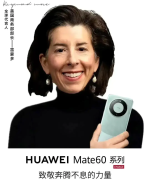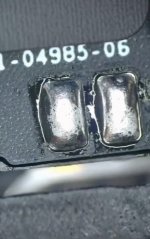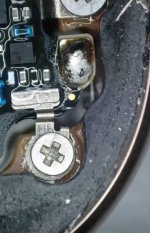China could not make a single iPhone or any Apple product without the legion of engineers who are sent to Shenzhen to help out
Apple's biggest issue is innovation for the price points the iPhones are being sold. That has little to do with whether factory is in China or India
For some reason a lot of technology giants have designated India for outsourcing of electronic manufacturing
Cisco, a global technology leader, announced today that it will start manufacturing in India, a major step in the expansion of its footprint in the country.
newsroom.cisco.com
One-sided disparagement or praise will not lead to ultimate victory.
There is no doubt that the rapid development of China's smartphone industry poses a great threat to Apple and Samsung.
In 2018, Huawei's global sales of cell phones were close to those of Samsung and Apple (the gap is very small), and it ranked third in the world. Other Chinese brands followed, but the sales gap was large.
In 2019, the United States began to sanction Huawei. Huawei sales plummeted.
In 2023, Apple's sales are the first in the world, Samsung is ranked second, and Xiaomi, OPPO and Transsion follow. The gap between them narrows further. Huawei is recovering, but not fully.
China smartphone market
Huawei, which was ranked No. 1 in the Chinese market in 2018, dropped out of the ranking due to the sanctions imposed by the US government on Huawei.
But also squeezed out of the ranking is Samsung. These market shares were divided by other companies, some of which flowed into Xiaomi, OPPO, and VIVO; some of which were absorbed by Huawei's spin-off Honor; and some of which flowed into Apple.
In 2023, with the “help” of U.S. Secretary of Commerce Gina Raimondo(Of course we know this is a joke.), Huawei launched the Mate 60, which marked the beginning of a new round of “Huawei-Apple War”.

September 10, 2024. the HUAWEI Mate XT and Apple iPhone 16 launch simultaneously in China. 6.445 million and 1.87 million order figures compared.
In the years that Huawei has disappeared from the market, we have seen him continue to introduce newer and more advanced technologies. For example: 5.5G, satellite calls, HarmonyOS, AI, folding screen technology, high hardness screens, and the Heath Kirin chip ..........
Meanwhile, we haven't seen much progress from Apple. --I mean after its comparison with Huawei.
We know that both Apple and Huawei invest a lot of money in R&D every year. But in the areas of core communications patents and user experience, Apple hasn't shown the public much. Since Steve Jobs passed away, we haven't gotten any big surprises in new Apple products. -- I am a fan of Steve Jobs, but not a fan of Apple now.
Judging from these phenomena, Apple products will be squeezed out of the Chinese market very soon if Apple doesn't carry out large-scale reforms. Subject to the sanctions imposed on China by the United States and Western countries, Apple's international market will not be hit too hard for the time being.
Whether the production of Apple products (the whole industrial chain) leaves China is not an important issue for China. Chinese companies have learned a lot from Apple, marketing, industrial design, precision machining, quality control (until today, I still appreciate the industrial design of Apple products) ........... This advanced knowledge has created many Chinese smartphone brands today. But times are progressing.
From the perspective of business operations, moving the factory to India is the best option for Apple. The problem is that India needs to make a lot of efforts to absorb it. I will keep watching.
I am a business designer and see things only from a business perspective. Viewing and analyzing issues with strong nationalistic sentiments can lead to huge losses for my clients.










